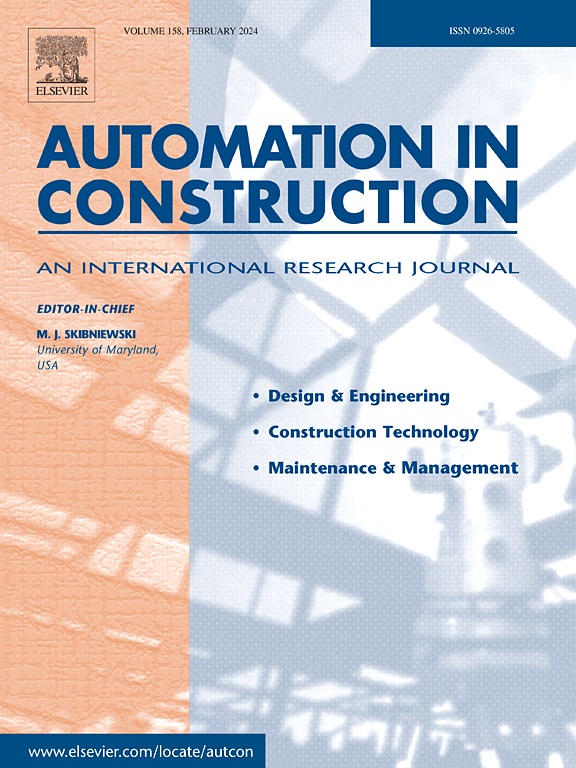Multi-view stereo 3D building reconstruction with sparse depth and edge location priors
IF 9.6
1区 工程技术
Q1 CONSTRUCTION & BUILDING TECHNOLOGY
引用次数: 0
Abstract
Accurate 3D building reconstruction remains challenging for large-scale structures with complex geometry. While deep learning-based Multi-View Stereo (MVS) methods improve upon traditional approaches, they exhibit errors in depth-discontinuous regions due to insufficient depth priors and architectural feature integration. To address these issues, this paper introduces ISENet, featuring: (1) an adaptive feature fusion framework for enhanced UAV image feature extraction, and (2) a multi-stage edge-aware depth hypothesis module leveraging sparse depth and edge location priors. Evaluations demonstrate state-of-the-art performance on the DTU dataset with Accuracy (0.238 mm) and Overall (0.277 mm) metrics. On real-world data, ISENet achieves 14.4 mm modeling error and 235 times higher point cloud density than commercial solutions. The approach also generalizes to standard MVS scenarios.
基于稀疏深度和边缘定位先验的多视点立体三维建筑重建
对于具有复杂几何形状的大型结构,精确的三维建筑重建仍然具有挑战性。虽然基于深度学习的多视图立体(MVS)方法在传统方法的基础上进行了改进,但由于深度先验和结构特征集成不足,它们在深度不连续区域中表现出错误。为了解决这些问题,本文引入了ISENet,其特点是:(1)用于增强无人机图像特征提取的自适应特征融合框架;(2)利用稀疏深度和边缘定位先验的多阶段边缘感知深度假设模块。评估在DTU数据集上展示了精度(0.238 mm)和总体(0.277 mm)指标的最先进性能。在实际数据中,ISENet的建模误差为14.4 mm,点云密度是商业解决方案的235倍。该方法还可以推广到标准的MVS场景。
本文章由计算机程序翻译,如有差异,请以英文原文为准。
求助全文
约1分钟内获得全文
求助全文
来源期刊

Automation in Construction
工程技术-工程:土木
CiteScore
19.20
自引率
16.50%
发文量
563
审稿时长
8.5 months
期刊介绍:
Automation in Construction is an international journal that focuses on publishing original research papers related to the use of Information Technologies in various aspects of the construction industry. The journal covers topics such as design, engineering, construction technologies, and the maintenance and management of constructed facilities.
The scope of Automation in Construction is extensive and covers all stages of the construction life cycle. This includes initial planning and design, construction of the facility, operation and maintenance, as well as the eventual dismantling and recycling of buildings and engineering structures.
 求助内容:
求助内容: 应助结果提醒方式:
应助结果提醒方式:


